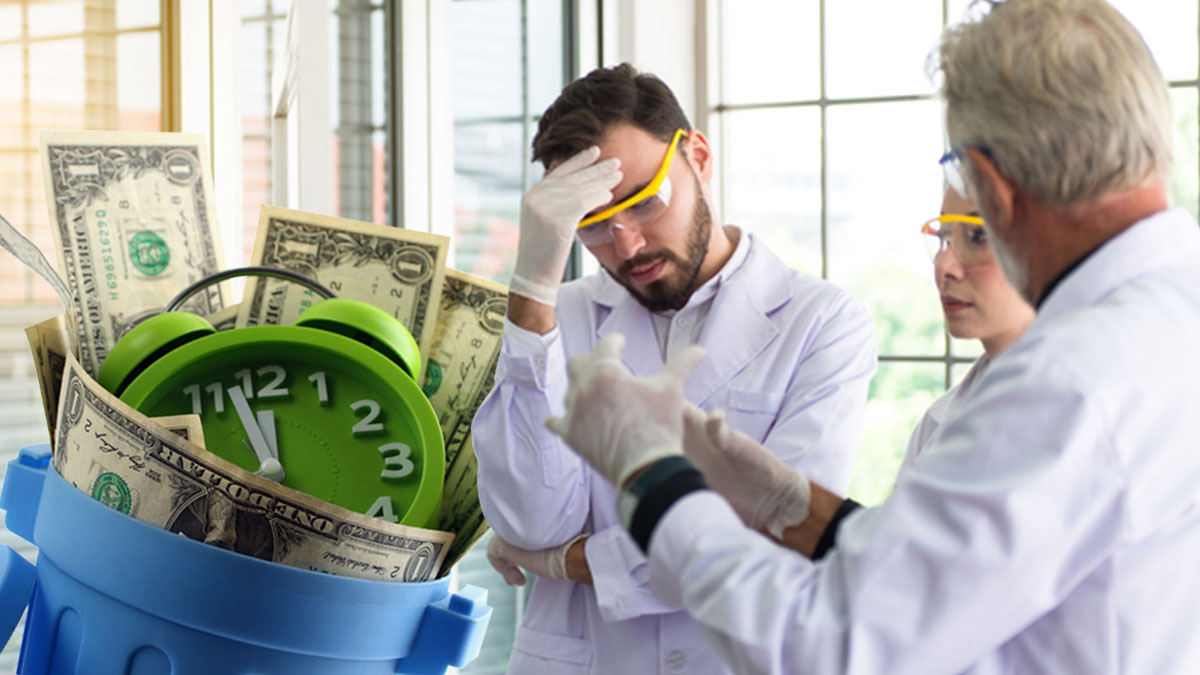Numbers Don’t Lie: Pharma Lab Inefficiencies Come at a High Cost
Drug discovery labs of all sizes are focused on reducing inefficiencies. However, the race to get to market faster can cause labs to overlook several factors that slow processes down; common inefficiencies can cause scientists to lose 12 and a half weeks of discovery time each year. That means for every four scientists on the payroll, your company wastes one year of core research and development.
Scientists are spending more than 25% of time focusing on non-core activities… from troubleshooting instrumentation to placing service calls and managing lab networks. It can be overwhelming to sort through the various reasons that can be causing your lab to run less efficiently than it should.
We’ve narrowed it down to the ten most common factors:
- Diagnosing and repairing instruments: For those without a service partner, it could take several hours – sometimes days – to get your instrument up and running again.
- Assuring instrument compliance: It’s necessary to take the time to ensure your systems are validated and compliant.
- Initiating service calls: Whether it’s for routine instrument maintenance or to fix a specific problem, time is lost following up with outside vendors.
- Keeping track of service visits: Scheduling and monitoring service visits is crucial to ensure your equipment is working properly.
- Updating instrument software: Whether you’re installing software updates or integrating new software into your lab, the time it takes to complete is time wasted.
- Training on new instruments: Learning how to operate a new instrument and educating your lab staff can take significant time away from drug discovery.
- Finding an available instrument: In larger labs, time is spent keeping track of reserved instruments and finding a workaround when the ones you want aren’t available.
- Responding to instrument failure: When you don’t have the proper resources, time is spent troubleshooting and/or finding the right repair service.
- Searching for misplaced instruments: When your lab isn’t properly organized, time is wasted trying to locate the instruments you need.
- Reacting to network downtime: When the network is down, productivity is down.
Laboratory Inefficiency Has a High Cost
Here’s how it works: If 100 scientists work 7 and a half hours a day for 50 weeks, that’s a total of 46,875 hours. Consider the fact that each scientist wastes 25% of their day on non-discovery tasks. That equals 25 unproductive, highly skilled scientists, costing progress and breakthroughs in drug discovery.
For more information, download our infographic.

